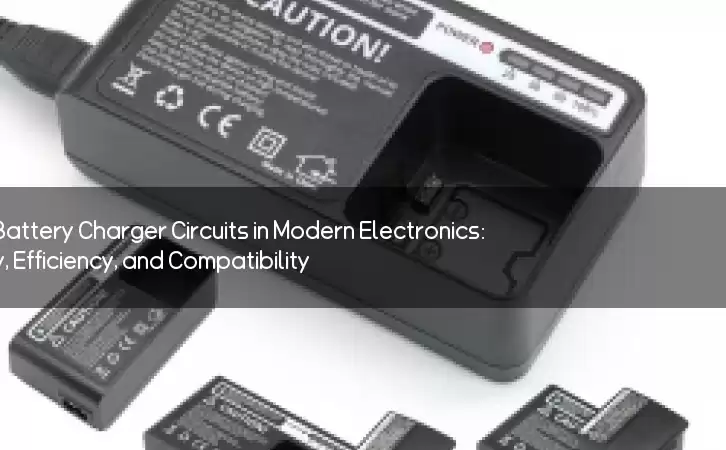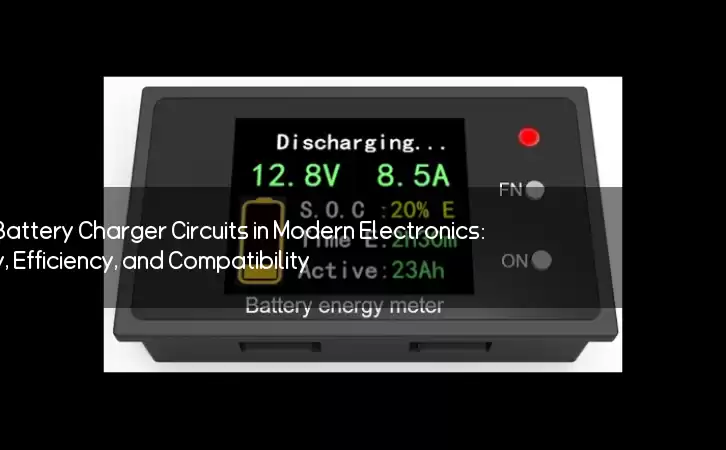Information Center
The Vital Role of Battery Charger Circuits in Modern Electronics: Ensuring Safety, Efficiency, and Compatibility
Published:2023-05-08 19:38:50 Author:Green WCND Views:48A battery charger circuit is an electronic circuit designed to charge rechargeable batteries efficiently and safely. It is an essential component in modern electronic devices ranging from laptops, smartphones, power banks, and electric cars. A properly designed battery charger circuit ensures that batteries are charged appropriately, preventing damage caused by overcharging, undercharging, overheating, short-circuits, and other hazardous conditions.

The basic functionality of a battery charger circuit is to convert the AC power supply from a wall outlet or a USB cable to a DC voltage that can be used to charge the battery. The DC voltage received by the battery charger circuit is usually rectified, filtered, and regulated to ensure a consistent and safe charging voltage and current. The charging process involves several safety measures to ensure that the battery is charged within safe limits.

There are various types of battery charger circuits designed to cater to different battery types, sizes, and applications. Some of the popular charger circuits include linear chargers, switching chargers, pulse chargers, and fast-charging circuits. Linear chargers are typically used in low-cost, low-power devices such as toys, remote controls, and flashlights. Switching chargers are commonly used in smartphones, laptops, and other portable devices due to their high efficiency and compactness. Pulse chargers are used in specialized applications that require fast charging, such as electric vehicles, power tools, and industrial equipment.
The charging process of a battery charger circuit is dependent on the chemical characteristics of the battery being charged. The two most common types of rechargeable batteries are the lithium-ion (Li-ion) and nickel-cadmium (Ni-Cd) batteries. Li-ion batteries are widely used in portable devices and electric vehicles due to their high energy density, low self-discharge rate, and low memory effect. On the other hand, Ni-Cd batteries are commonly used in emergency lighting, medical devices, and power tools due to their good performance at low temperatures, ruggedness, and high discharge rates.
A well-designed battery charger circuit should consider factors such as the safety of the charging process, the efficiency of the charging process, and the compatibility with the battery type. Charging batteries safely is crucial to prevent damage to both the device being charged and the battery itself. Overcharging or undercharging a battery can lead to reduced battery life, leakage, and even explosions in severe situations. The efficiency of the charging process refers to the amount of electrical energy lost during the charging process. A high-efficiency charging circuit ensures that the battery is charged quickly, economically, and without getting too hot. Lastly, the compatibility with the battery type means that the charging circuit should be designed to accommodate the specific voltage, current, timing, and temperature requirements of the battery being charged.
In conclusion, a battery charger circuit is an essential component of modern-day electronics. It ensures that rechargeable batteries are charged efficiently, safely, and within the specified voltage and current limits. A properly designed battery charger circuit can extend the life and performance of the battery, save energy, and reduce safety hazards. The continuous advancement in battery technology and the increasing demand for portable, efficient, and sustainable energy storage has put more emphasis on the need for innovative and reliable battery charger circuits.
Power Adapter Design and Customization Guide for Portable Electric KettlesI. Common Design Types for Portable Electric Kettle Power AdaptersPortable electric ke···
I. Common Design Types of Power Adapters External Independent Type (Most Common) Design: A standalone adapter (e.g., "black brick") connected to the p···
Handheld Vacuum Cleaner Power Adapter Selection GuideIntroductionHandheld vacuum cleaners have become a mainstream tool for household cleaning due to their port···
Drill Power Adapter Selection Guide.drill-container { font-family: Arial, sans-serif; line-height: 1.6; max-width: 800px; margin: 0 auto; padding: 20px; } .dril···





